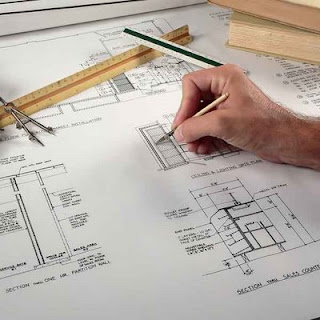These days, more and more of my clients

have come to the realization that making a move to a new home may not be their best interest, finanicially. In a topsy-turvey real estate market, the more prudent solution is to add a second floor or addition to their existing home.
No matter what you choose to do, planning, preparation and coordination will make the difference to you and your pocketbook.
First of all, adding an addition to your home, if done well, will enhance your property's value in addition to helping you gain a considerable amount of living space. If done with "NO" consideration about resale value, the time and investment you put into the project may end up costing you!
Before you consider anything, I recommend involving a design professional and remodeling contractor, it will also be important for you to become familiar with building codes, structural issues. Having a clear understanding of the process will allow you to be on top of all phases of project and ensure that work is done correctly and runs smoothly without costly delays.
Here are some steps to take prior to making any move to remodel or add on to your home
1. Take a Look at Your Neighborhood
I recommend you walk your immediate neighborhood, take pictures and notes to get a clear understanding of homes nearby that are similar to yours in terms of appearance, size and features. This will help you understanding if adding on to your home is within the neighborhood norm. If your vision much larger than what is acceptable for area, the investment may not pay off as much as you invest. (Having a 5,000 sq. ft. add-on to a home in an area where 1,500 sq. ft homes are the norm, may not yield the return when you decide to move. It may be considerably harder to convince potential buyers and Realtors that your home should be valued exponentially higher than those around it.)
2. Hire Professionals
The complexity of any addition to layout and future value of a home dictates that you engage the services of an architect and reputable contractor. An architect will prepare code-compliant plans and will provide you experience you can't get anywhere else, at a cost of only 5-20% of the total project cost.
A reputable general contractor will coordinate workflow, source materials, schedule delivery and help you with valuable insight during the construction process.
Ask your nieghbors that have done similar renovations who'd they recommend and don't be shy about asking 3-4 companies to bid on the whole project and go with the one you feel most comfortable with -- even though they may not be the lowest cost.
And, always ask for an itemized bid!
Hiring professionals with experience allows you to focus on making the right decisions about your home renovation/addition and is ideal to minimize stress and coordination.
3. Understand the Building Codes and Restrictions for Your Area
Not adhering to building codes and ordinances can result in major setbacks to any project you propose for your property. Leaning on your architect and/or general contractor to make assurances does not provide 100% safety from the inspector. You should have a checklist of all the acceptable and expected requirements of building.
Certain codes, ordinances and association rules might stipulate building height and historical parameters with the goal to preserve continuity and established environment. Also, don't be surprised if there are codes that dictate maximium percentage of your lot that can be covered by built structures. Even the trees and fences allowed, color of paint and roof materials you can use for the structure.
Start by gathering basi

c information about your home. Lot dimensions, property lines and any surveys can be available through The City or municipal property office or building department. In addition, get as clear as you can about the what permits will be needed and any pitfalls you need to be aware of.
Being proactive about your remodel/add-on will save you time and MONEY in the short term. And make you lots of $$$$ down the road.















